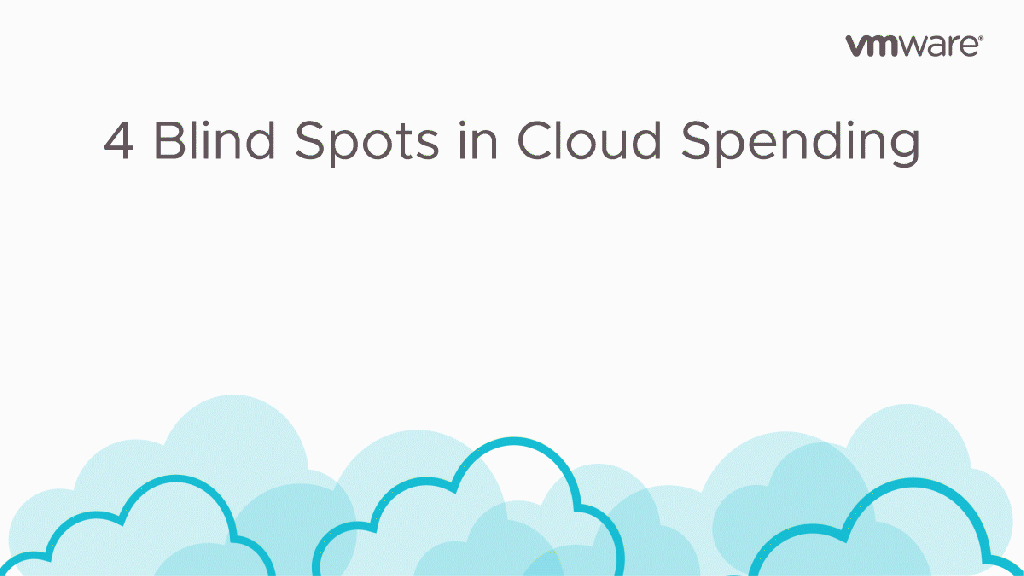2020 opened our eyes to what’s possible, even in the harshest circumstances. Now, we expect more from businesses, governments, healthcare and schools. And that starts with organizations delivering digital experiences that allow productivity and creativity to flourish, while moving obstacles out of the way.
The pandemic has been a phenomenally powerful agent for change. In some cases, we did nine months of work in nine days in order to get people working from home, for example, enabling clinicians to be at home providing care to patients, who are also at home. Digital solutions that would have taken us years to persuade people to use are now commonplace. It’s really brought about change at a much faster pace than ever before.
MARK HUTCHINSON, CHIEF DIGITAL AND INFORMATION OFFICER, GLOUCESTERSHIRE HOSPITALS NHS FOUNDATION TRUST
To survive and thrive in the “next normal,” today’s leaders must:
- Deliver great digital experiences.
- Enable automated, programmable and on-demand access to digital infrastructure and data.
- Empower developers with the speed and choice they need to innovate—with minimal friction.
- Build security into the very fabric of the digital foundation, intrinsically protecting customers, employees, citizens and partners.
In our app-centric world, leading organizations are putting cloud at the service of apps—not the other way around. And that means fundamentally rethinking the app + cloud relationship.
Apps at Your Service
Legacy cloud models lock organizations—and applications—into a single cloud vendor. But that doesn’t work in today’s fast-paced, rapidly changing world.
Top 7 Cloud Challenges
- Expensive and slow migration: Infrastructure APIs are different for each cloud and the on-premises environment. Portability is challenging.
- Modernizing legacy apps: The proliferation of technology stacks, lack of deep code base knowledge and long development cycles to refactor/rewrite apps make modernization costly and slow.
- Lack of expertise: Hiring new talent or training teams to properly understand each cloud, perform mass migrations, deploy Kubernetes and manage/operate these new technologies takes time.
- Security risks: Teams need to ensure consistency in configuration and policy across different environments and applications—no matter where they are deployed.
- Operational complexity: New technology silos increase complexity and introduces more risk and costs to manage and govern multiple environments. Each has different pipelines, tooling and runbooks for each app and different tooling for each cloud.
- Avoiding vendor lock-in: Differences in each cloud provider’s technology makes it difficult to achieve true portability and adds pressure on which cloud to choose and why. This is a key driver for operating in multiple cloud environments.
- Where to start? What to choose? When looking at a complex app portfolio and facing a myriad of cloud and container choices with slight differences, it may be difficult to decide which path to take.
Freedom of choice, manifested in a “cloudnostic” approach, is now a business requirement. Because when app strategies dictate cloud strategies, organizations can adapt faster to the needs of the business.
Before transitioning to managed cloud services, we owned and maintained all the hardware. In some regards, that took away from our core mission. I worried about the health of the physical infrastructure, instead of whether we’re running the right applications to meet business needs. Now … I get to tap into many new cloud specialists to help us be better and respond quicker to problems.
STEVE CARLBERG, MANAGING DIRECTOR, INFRASTRUCTURE, FEEDING AMERICA
Right Cloud, Right App, Right Cost

To unlock the potential of cloud and applications, businesses need to engage across three main transformations.
- Application transformation: Embracing microservices and APIs to enable a fundamentally improved developer experience with greater agility, speed and scale.
- DevSecOps transformation: Accelerating the path to new and modern applications, delivering critical business services to production securely and continuously at the pace of development.
- Cloud infrastructure and operations transformation: Redefining the foundation of IT with cloud capabilities, modern architectures and a cloud operating model that spans the data center to any cloud and the edge for all applications.
While on their cloud transformation journeys, many organizations are not intentionally choosing a multi-cloud strategy. Yet, many end up in a multi-cloud reality, searching for ways to operationalize, optimize and secure environments without slowing innovation.
Our strategy is about the right cloud for the right system. The speed of delivery is so much faster in the cloud than it was on the data center. We’re delivering new product out every two weeks compared to when I first came into the organization three years ago and it took us 3-6 months to do some just basic delivery. The speed of execution and delivery is so much faster.
JEFFREY SHAW, SENIOR VICE PRESIDENT AND CHIEF INFORMATION OFFICER, EMPLOYERS
Five Benefits of a Multi-Cloud Strategy
- Manage applications consistently regardless of where deployed.
- Build, move and run apps anywhere, moving between public clouds without rewriting.
- Keep apps secure no matter where they run.
- Enable developer and IT support, so teams can collaborate easily.
- Migrate to new cloud environments seamlessly, so adapting doesn't mean refactoring.
One of the main benefits is around elastic scale and the ability to roll out quickly and consistently across that platform. We’ve got hundreds of applications to move, and if we were to take every single application on a single path journey, we would be at this forever more. It’s all about speed to market.
SARAH LUCAS, HEAD OF PLATFORMS AND INFRASTRUCTURE, WILLIAM HILL
While cloud is a business accelerator, business and IT leaders must be smart about how they consume cloud services. There are blind spots in cloud spending, and they need to be aware to optimize budgets and drive value.

- Refactoring and rework: The cost of moving from one platform to another.
- Talent re-skilling: The cost of accessing new talent or training existing talent.
- Optionality and lock-in: The cost of change and cost-benefit assessment for cloud provider functionality.
- Operations: Costs for scaling up and scaling down based on demand, as well as administrative overhead costs/savings.
Organizations with an understanding of cloud economics will be in a better position to optimize cloud costs now. Long after the current crisis, a well-designed cloud strategy will also help prepare for the future.
Empowering Developers with Cloud Innovation

As market competition heats up, so does the race for developer talent. App developers increasingly choose organizations that empower creativity, cut through red tape and help them get projects to production faster. To support their success, developers need a multi-cloud environment to:
- Accelerate the delivery of new services.
- Rapidly deploy new innovationsthat redefine customer engagement, revenue models and employee services.
- More efficiently build, run and manage applications on any cloud.
All of this is possible with a VMware multi-cloud architecture.
IT teams can:
- Deliver a cloud operating model for all applications.
- Embrace agile and DevOps principles, such as continuous integration and continuous delivery (CI/CD).
- Build, run and manage applications via a single, software-defined platform—from onsite to offsite environments.
Developers can:
- Transform and improve existing applications.
- Expand the use of containers, cloud-native architectures and cloud services.
- Drive partnership by eliminating silos—both departmental and operational.
- Strengthen collaboration between dev and operations for accelerated delivery.
Our cloud journey has evolved quite a bit over the years. However, our commitment to delivering products and services to our clients rapidly by providing a frictionless experience to our developers remains as important as ever.
VIJAY LUTHRA, CIO, NORTHERN TRUST WEALTH MANAGEMENT (FORMER CTO OF NORTHERN TRUST)
What About Security?
Before the pandemic, 42% of IT professionals said public cloud security was a top concern, according to the 2020 Future Shock: The Cloud Is the New Network survey. As the threat landscape grew significantly during the pandemic, attitudes began to change. Now, businesses worldwide are quickly embracing multi-cloud security strategies to better protect data sources and apps.
Managing Multi-Cloud Security & Compliance
Manage security and compliance across clouds with real-time insights, threat detection and enhanced collaboration, freeing developers to focus on critical issues:
- Reduce the risk of misconfigurations: Improve your cloud's security with real-time visibility into misconfigurations based on out-of-the-box security rules and custom policies.
- Prioritize risk mitigation activities: Prioritize issues using smart risk scores, investigate with visual context and collaborate with distributed teams to resolve issues quickly.
- Detect threats in real-time: Use data from cloud-native threat feeds to continuously monitor the cloud for anomalies and suspicious activities.
- Accelerate issue investigation: Raise immediate alerts, correlate threats with misconfigurations and investigate issues with meaningful context to address the biggest threats first.
- Comprehensive posture management: In a single view, track compliance scores, number of open violations and progress that teams made in resolving issues.
- Unify SecOps and DevOps: Build guardrails to proactively mitigate security risks before applications hit production.
Certainly, a key part of our cybersecurity future is going to be migrating off-premises to a centralized virtual environment—in short, to the cloud.
THOMAS BALCAVAGE, SVP AND CTO, THOMAS JEFFERSON UNIVERSITY AND JEFFERSON HEALTH
Preparing for the App of Tomorrow
Multi-cloud strategies help power today’s best app experiences. And cloud providers are pushing limits, too. Hyperscalers and regional cloud providers are introducing cutting-edge capabilities to support tomorrow’s apps, allowing customers to take advantage of emerging technologies like:
- AI and machine learning (ML).
- Big data analysis.
- Blockchain.
- IoT.
- Virtual and augmented reality.
AI can be used to detect disease in large patient imaging studies more rapidly than the human eye. And, with further research, this technology will enable doctors to provide the fastest, most accurate and safest diagnoses and treatments for patients. Bringing our NVIDIA Clara AI application frameworks and VMware Cloud Foundation together will help us expand our work in AI using a common data center infrastructure for activities, such as training and research, and to help support time-sensitive urgent care diagnostics.
CHRISTOPHER HESS, CHAIR OF RADIOLOGY AND BIOMEDICAL IMAGING, UCSF
AI and ML also offer opportunities to optimize infrastructure operations and automate IT management. VMware’s Project Monterey, for example, focuses on evolving architecture for the data center, cloud and edge. Ultimately, this innovation helps address the changing requirements of next-generation applications, including AI, machine learning and 5G applications.
Best of All Possible Clouds
It’s challenging for our customers, because technology moves and changes so fast. We do find the vast majority of them want to have that management capability across multiple clouds. And in those types of scenarios, it allows the customer to elevate their staff to be architects for their business (and) focus on the applications that run their business.
STEVE NOLAN, PROJECT MANAGER, LUMEN
Where is your organization is on its cloud journey—cloud curious, cloud capable or cloud first? No matter where you fall on the pendulum, multi-cloud accelerates innovation and efficiency, while strengthening security.


